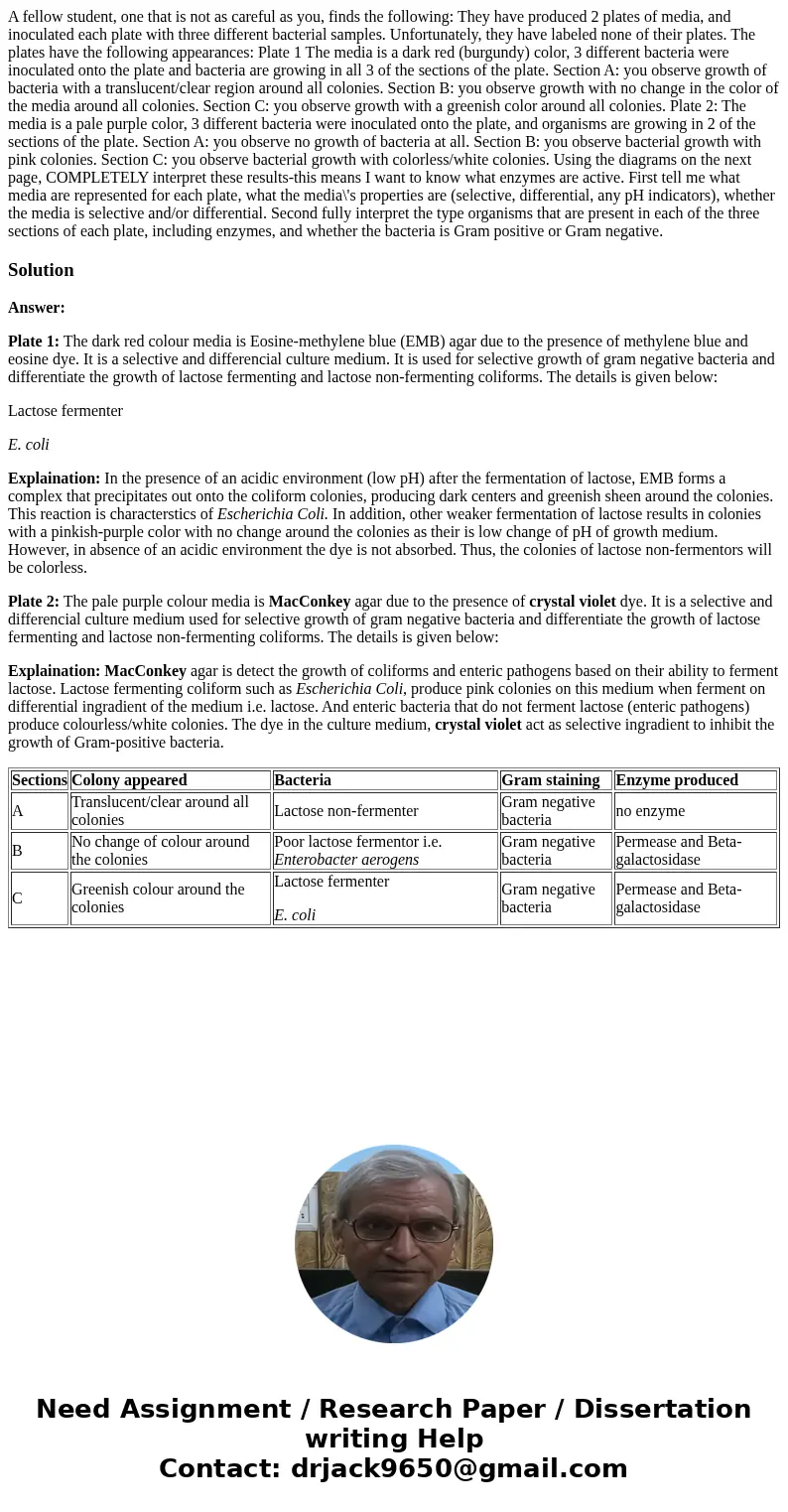A fellow student one that is not as careful as you finds the
Solution
Answer:
Plate 1: The dark red colour media is Eosine-methylene blue (EMB) agar due to the presence of methylene blue and eosine dye. It is a selective and differencial culture medium. It is used for selective growth of gram negative bacteria and differentiate the growth of lactose fermenting and lactose non-fermenting coliforms. The details is given below:
Lactose fermenter
E. coli
Explaination: In the presence of an acidic environment (low pH) after the fermentation of lactose, EMB forms a complex that precipitates out onto the coliform colonies, producing dark centers and greenish sheen around the colonies. This reaction is characterstics of Escherichia Coli. In addition, other weaker fermentation of lactose results in colonies with a pinkish-purple color with no change around the colonies as their is low change of pH of growth medium. However, in absence of an acidic environment the dye is not absorbed. Thus, the colonies of lactose non-fermentors will be colorless.
Plate 2: The pale purple colour media is MacConkey agar due to the presence of crystal violet dye. It is a selective and differencial culture medium used for selective growth of gram negative bacteria and differentiate the growth of lactose fermenting and lactose non-fermenting coliforms. The details is given below:
Explaination: MacConkey agar is detect the growth of coliforms and enteric pathogens based on their ability to ferment lactose. Lactose fermenting coliform such as Escherichia Coli, produce pink colonies on this medium when ferment on differential ingradient of the medium i.e. lactose. And enteric bacteria that do not ferment lactose (enteric pathogens) produce colourless/white colonies. The dye in the culture medium, crystal violet act as selective ingradient to inhibit the growth of Gram-positive bacteria.
| Sections | Colony appeared | Bacteria | Gram staining | Enzyme produced |
| A | Translucent/clear around all colonies | Lactose non-fermenter | Gram negative bacteria | no enzyme |
| B | No change of colour around the colonies | Poor lactose fermentor i.e. Enterobacter aerogens | Gram negative bacteria | Permease and Beta-galactosidase |
| C | Greenish colour around the colonies | Lactose fermenter E. coli | Gram negative bacteria | Permease and Beta-galactosidase |

 Homework Sourse
Homework Sourse